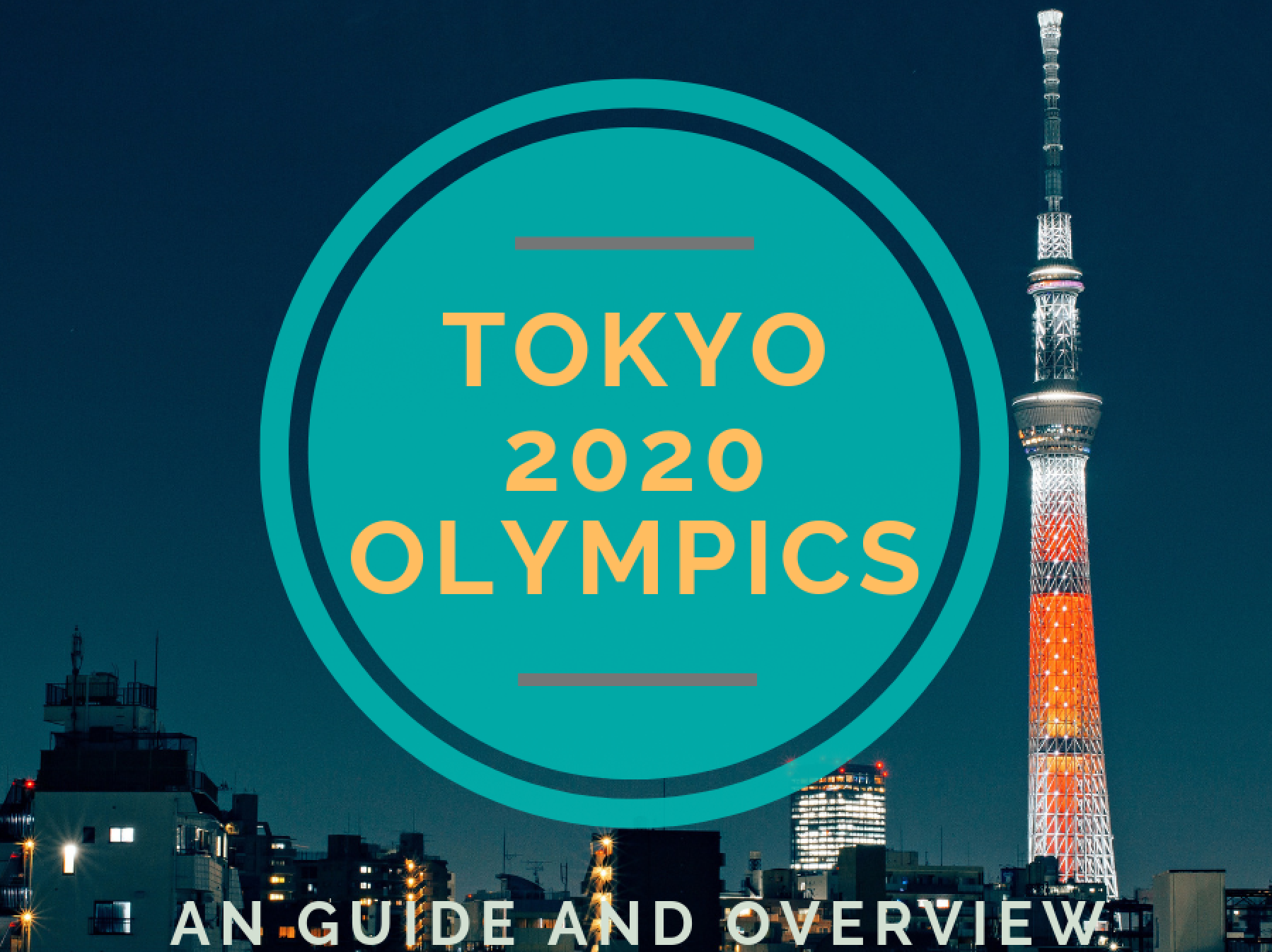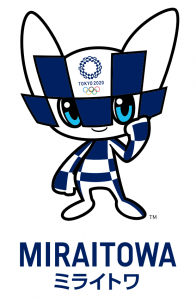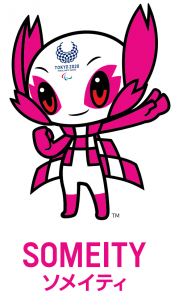Back to blog
Tokyo 2020 Olympics Guide and Overview

2020 is a year of wonder as its numbers suggest. The last when two number coincide in such a way was in 1010, 1010 years ago. What is more exciting is that after 56 years, the Olympics Games has once again returned to Tokyo, Japan. If you are in Japan or planning to come here in 2020, then you are in luck. Keep reading and we will make sure that you are well-equipped with the essential 2020 Tokyo Olympics knowledge.
Game Vision: Sport has the power to change the world and our future.
The first Olympics ever hosted in Tokyo in 1964 transformed the capital city in a way like never before. It is the hope of all Japanese people that The Tokyo 2020 Games will as well be a historic and most innovative time in history. The Tokyo Olympics Committee hopes to bring positive reforms from Japan to the world with three core concepts in mind: “Striving for your personal best (Achieving Personal Best)” “Accepting one another (Unity in Diversity)” “Passing on Legacy for the future (Connecting to Tomorrow)”
The Emblems
There are two emblems for the Tokyo 2020 Olympic Games. The one on the left is the general emblem for all games and the one to the right is specifically made for the Tokyo 2020 Paralympic Games.
The emblems are composed of checkered square patterns in the traditional Japanese indigo blue color which exemplifies the refined elegance of Japan. The three varieties of the 45 rectangular shapes that compose the emblems represent “Unity in Diversity“.
The Mascots: Miraitowa and Someity
 Miraitowa‘s name comes from the combination of the Japanese words for future “Mirai”(未来) and eternity “towa” (永遠). He symbolizes a forever future full of hope no matter where one shall come from in the world.
Miraitowa‘s name comes from the combination of the Japanese words for future “Mirai”(未来) and eternity “towa” (永遠). He symbolizes a forever future full of hope no matter where one shall come from in the world.

The name Someity comes from a popular variety of cherry blossom called “Someiyoshino” (染井吉野) in Japanese combined with the English phrase “so mighty”. Someity has cherry petal-shaped sensors on her ears and has an enormous mental and physical strength. The mascot represents Paralympic athletes who bravely overcome their physical obstacles and redefine the boundaries of possibility.
When
2020 Summer Olympics will begin on Friday, July 24, 2020, and end on Sunday, August 9, 2020
Where
Venues in Tokyo, near Yoyogi:
1 New National Stadium (新国立競技場). The opening ceremony, track and field, and soccer.
2 Tokyo Metropolitan Gymnasium (東京体育館). Table tennis.
3 Yoyogi National Stadium (国立代々木競技場). Handball.
Venues in Tokyo, near the Imperial Palace:
4 Nippon Budokan (日本武道館). Judo.
5 Imperial Palace Garden (皇居外苑). Start of the bicycle road race.
6 Tokyo International Forum (東京国際フォーラム). Weight lifting.
7 Kokugikan Arena (両国国技館). Boxing, in Japan’s most famous sumo wrestling place.
Venues in Tokyo, around Ariake:
8 Ariake Arena (有明アリーナ). Indoor volleyball.
9 Olympic BMX Course (有明BMXコース). BMX.
10 Olympic Velodrome (有明ベロドローム). Cycling track.
11 Olympic Gymnastic Centre (有明体操競技場). Gymnastics.
12 Ariake Tennis Park (有明テニスの森). Tennis.
13 Odaiba Marine Park (お台場海浜公園). Triathlon, marathon swimming.
14 Shiokaze Park (潮風公園). Beach volleyball.
Tokyo Big Sight: Wrestling, fencing, taekwondo
15 Tokyo Big Sight Hall A (東京ビッグサイト・ホールA). Wrestling.
16 Tokyo Big Sight Hall B (東京ビッグサイト・ホールB). Fencing, taekwondo.
17 Seaside Park Hockey Stadium (大井ホッケー競技場). Hockey.
18 Olympic Village (選手村). Only athletes, trainers and officials are allowed in.
Venues in Tokyo, around Sea Forest (海の森)
19 Sea Forest Cross-Country Course (海の森クロスカントリーコース). Equestrian eventing cross-country.
20 Sea Forest Waterway (海の森水上競技場). Rowing, Canoe-Kayak.
21 Sea Forest Mountain Bike Course (海の森マウンテンバイクコース). Mountain bike.
22 Wakasu Olympic Marina (若洲オリンピックマリーナ). Sailing.
23 Kasai Slalom Course (葛西臨海公園). Canoe-Kayak slalom.
Venues in Tokyo, around Dream Island (夢の島):
24 Youth Plaza Arena A (夢の島ユース・プラザ・アリーナA). Badminton.
25 Youth Plaza Arena B (夢の島ユース・プラザ・アリーナB). Basketball.
26 Dream Island Archery Field (夢の島公園). Archery.
27 Olympic Aquatics Centre (オリンピックアクアティックセンター). Swimming, synchronized swimming, diving.
28 Waterpolo Arena (ウォーターポロアリーナ). Waterpolo.
Venues in Musashino, one hour from the Tokyo center:
29 Musashino Forest Sports Center (武蔵野の森総合スポーツ施設). Fencing.
30 Tokyo Stadium (東京スタジアム). Football, modern pentathlon (swimming, riding, running, shooting), and rugby sevens. The stadium is currently known as “Ajinomoto Stadium”.
31 Musashino Forest Park (武蔵の森公園). The finish of the bicycle road race.
Other venues one hour from the Tokyo center:
32 Asaka shooting Range (陸上自衛隊朝霞訓練場). Shooting.
33 Kasumigaseki Country Club (霞ケ関カンツリー倶楽部). Golf.
34 Saitama Stadium (埼玉スタジアム2002) (In Saitama.). Football.
35 Saitama Super Arena (さいたまスーパーアリーナ) (In Saitama.). Basketball.
36 International Stadium Yokohama (横浜国際総合競技場) (In Yokohama.). Football.
37 Yokohama Stadium (横浜スタジアム) (In Yokohama.). Baseball and softball.
Venues in other cities:
38 Fukushima Azuma Baseball Stadium (福島県営あづま球場) (In Fukushima, about 90 minutes north of Tokyo and 30 minutes south of Sendai.). Baseball and softball.
39 Kashima Soccer Stadium (茨城県立カシマサッカースタジアム) (In Kashima, about 90 minutes northeast of Tokyo.). Football.
40 Miyagi Stadium (宮城スタジアム) (In Sendai, two hours north of Tokyo.). Football.
41 Sapporo Dome (札幌ドーム) (In Sapporo, in the very north of Japan, reachable by plane or 4 hours on the bullet train.). Football.
Learn Japanese with Coto Academy!
Experience engaging, community-focused lessons at Coto Club, a top-rated Japanese language school in Minato, Tokyo. You can also learn Japanese from anywhere in the world with Coto Academy’s online Japanese language school.

